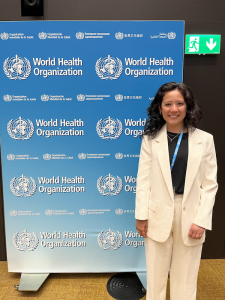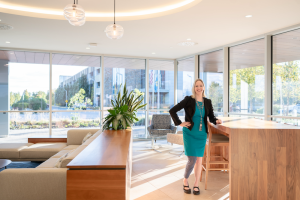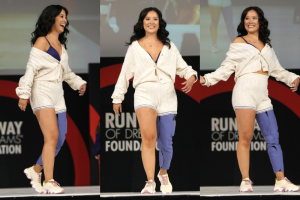
Last week, CIONIC presented the outcomes of a partnership with the Laboratory for Engineering of the Neuromuscular System (LISiN) at The Polytechnic University of Turin. The partnership with Dr. Alberto Botter (a recently announced member of the CIONIC Scientific Advisory Board), and his team, including Dr. Giacinto Luigi Cerone, aimed to develop the complex technical architecture required to deliver the breakthrough Cionic Neural Sleeve to market.
With the Cionic Neural Sleeve, our goal was to create the world’s most advanced mobility solution. Unlike traditional mobility aids like walkers, wheelchairs, and crutches, our technology was designed to address the underlying neuromuscular system with the goal to retrain and strengthen the body over time.
“We set out to create a product that combined the diagnostic power of a multi-million dollar gait lab with the therapeutic power of Functional Electrical Stimulation to tackle the growing challenge of impaired mobility” according to CIONIC CEO and Founder Jeremiah Robison. “It is expected that over 20% of the world’s population will be mobility impaired by 2050.”
This is a monumental challenge that takes a deep investment in interfacing frontier technology to the human body. The proprietary sensor array in the Cionic Neural Sleeve (the Read+Write Neural Interface™) is unlike anything created before. To make it a reality, we collaborated with the world’s foremost experts in neuromodulation — the Laboratory for Engineering of the Neuromuscular System (LISiN) at The Polytechnic University of Turin.
LISiN — The Ideal Partnership
LISiN of Polytechnic of Turin develops devices and methods for the non-invasive assessment of the neuromuscular system and for motor rehabilitation. Specific areas of interest include the assessment of muscle control mechanisms, performance and adaptations to fatigue, pathologies and aging. During our research phase several years ago, we discovered a paper on how to reduce fatigue using FES. The author was Cerone, and we reached out to him to present his work. We were then introduced to Dr. Botter, and the collaboration grew.
“CIONIC mixes creativity, great teamwork, and outstanding technical competence to improve the quality of life of people with mobility impairments,” says Dr. Alberto Botter. “I am honored to be part of the CIONIC Scientific Advisory Board.”
A Track Record of Successful Medical Innovation
LISiN activities are characterized by a strong vocation to technology transfer, leading to a strong interaction with industrial partners and high-tech startups. Innovative medical devices developed at research level are now part of the device portfolios of several companies throughout the world. Since 2015, LISiN designed, developed and supported the CE/FDA certification of six electromedical systems. Because of this, they have not only the technological knowledge to bring innovative technologies to market, but understand the regulatory landscape as well.
“Being part of the CIONIC way to convey innovative biomedical technology to people with disabilities is exciting, engaging, and inspiring. CIONIC is a great example of a multidisciplinary and distributed team characterized by a unique mix of high-level moral principles, competencies, and passion,” said Dr. Giacinto Luigi Cerone.
Together with Botter, Cerone and the LISiN team, CIONIC successfully combined electromyography (EMG) and functional electrical stimulation (FES) into a single electrode array, an incredibly challenging technical feat, and one that sets Cionic apart in its ability to analyze, predict, and augment the body in real-time.
The Best and Brightest
At the core of the CIONIC company DNA is an obsession with scientific rigor and data validation, which means we will always go the extra mile to find the best possible partners as we develop our products. Solving mobility impairment is a global challenge, which means we will continue to partner with the global leaders and thinkers leading R&D for the disciplines relevant to our users and our platform to create the most comprehensive platform for human augmentation.





